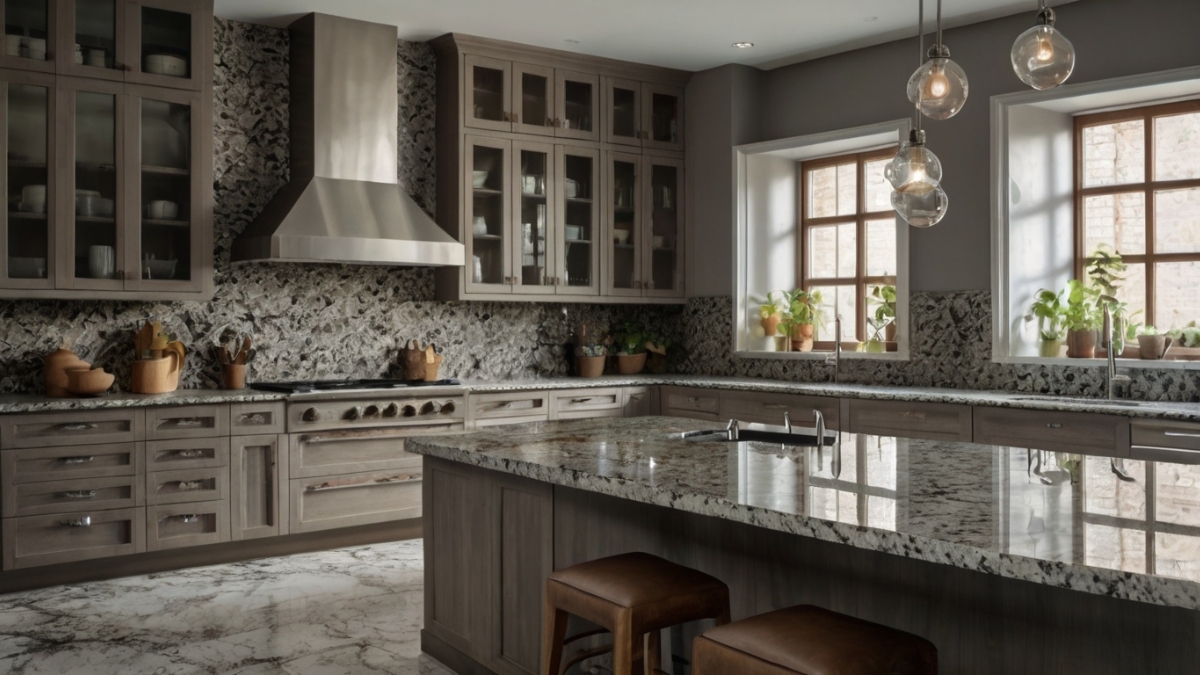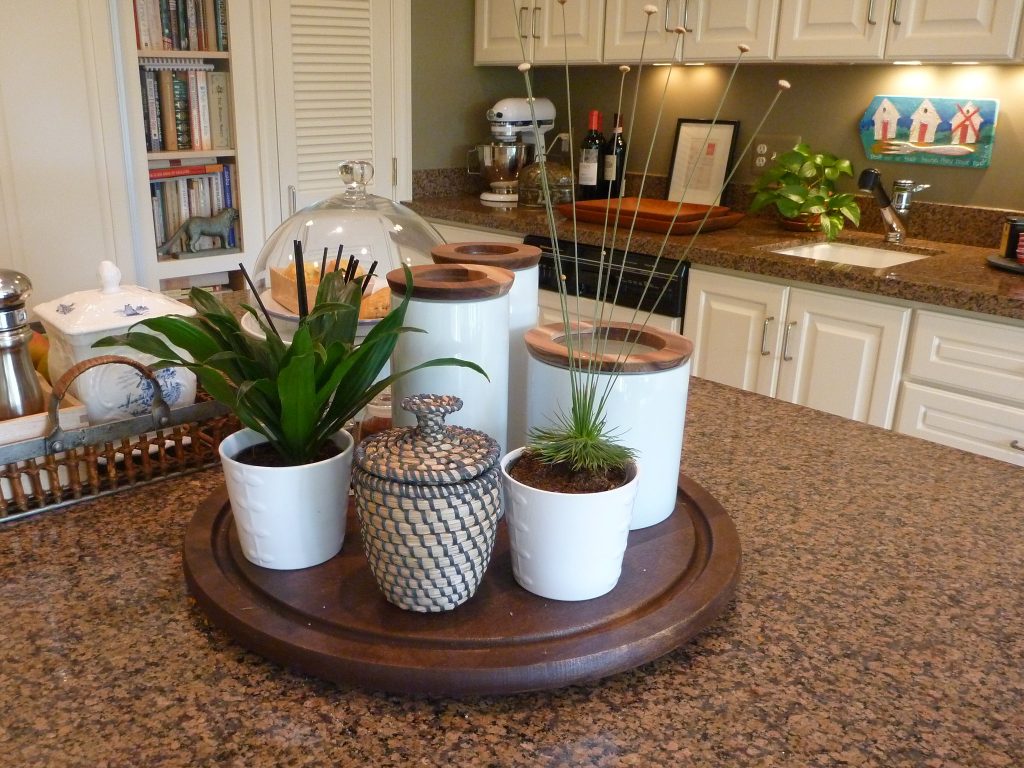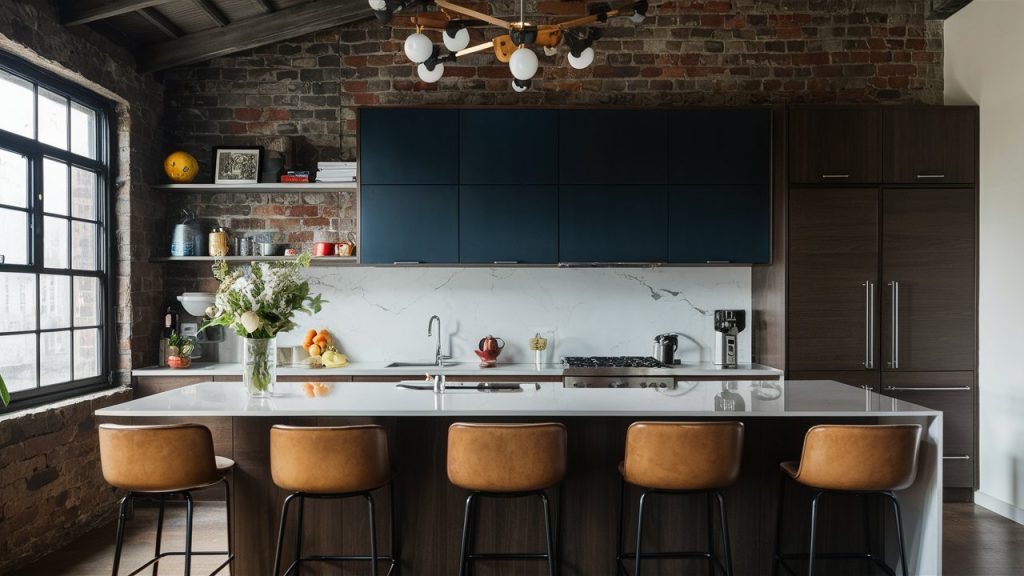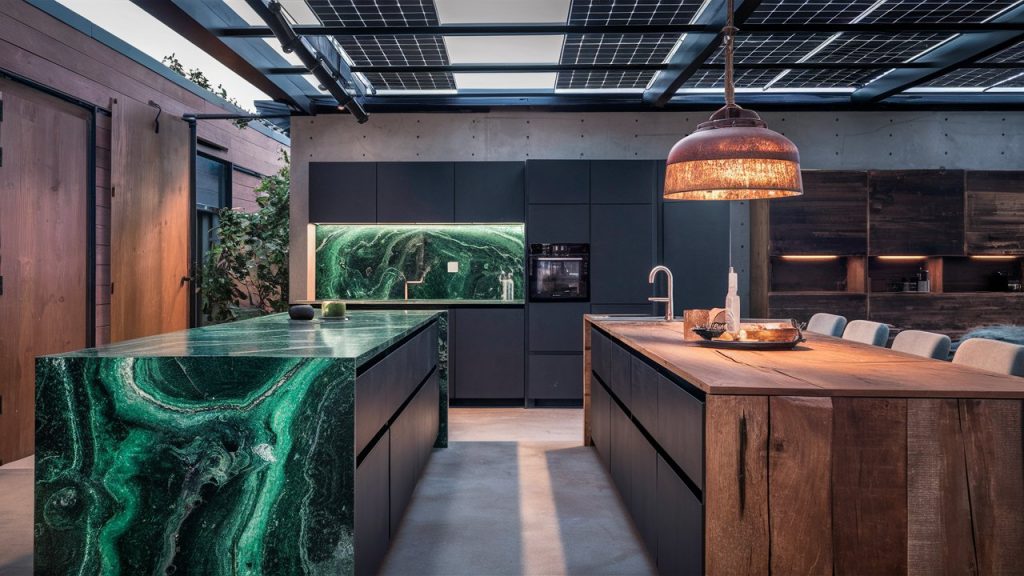Granite kitchen countertops remain one of the most coveted choices for kitchen surfaces, known for their elegant appearance and exceptional durability. Whether you’re a homeowner looking to renovate or a contractor working with clients, understanding how to save on granite countertops can make a significant difference in your project budget. The upfront cost of granite can seem high, but with the right approach, you can still enjoy this luxury material without breaking the bank.
In this guide, we will explore the factors that influence the cost of granite countertops, share strategies to reduce these costs, and provide real-world examples to demonstrate how these tips can lead to substantial savings. From smart purchasing decisions to installation tips, our goal is to equip you with the knowledge needed to make granite countertops more affordable, without sacrificing quality.
Key Takeaways
Table of Contents
What Affects Granite Countertop Pricing?
When it comes to granite countertops, pricing isn’t a one-size-fits-all scenario. Several factors can drive the price of granite up or down, and understanding these can help you make smarter purchasing decisions. Let’s break down the key elements that affect granite pricing:
Material Quality
Granite comes in various grades, with premium granite being more expensive due to its rarity, unique patterns, and vibrant colors. Exotic stones like Blue Louise or Calacatta Gold are typically much pricier than more common varieties such as Ubatuba or White. For homeowners on a budget, opting for more widely available granite types can significantly reduce costs without compromising on quality.
Slab Size
Granite is sold by the square foot, and the size of the slabs you need will have a direct impact on the overall cost. Larger kitchen countertops require more material, which means higher prices. A simple way to keep costs down is to minimize wastage by accurately measuring your counter space before purchasing slabs.
Granite Color and Patterns
The price of granite is also influenced by its color and pattern. Rare colors like Emerald Green or Alaska White can cost a premium due to their rarity. In contrast, more neutral colors such as beige, black, or gray tend to be more affordable, as they are more widely available. For a cost-effective renovation, stick to popular colors that are easy to source.
Granite Thickness
Granite slabs typically come in two thicknesses: 3/4 inch and 1-1/4 inch. Thicker slabs of granite are more expensive because they require more material, and they also add weight, which can increase installation costs. Opting for the thinner variety can help cut costs without compromising on durability.
Edge Style and Finish
Granite countertops can be customized with various edge styles, from simple straight edges to more intricate designs like ogee or bullnose. Custom edges often come with an additional cost. If you’re on a budget, choosing a simple, straight edge can significantly lower your costs.
Granite Countertop Pricing by Square Foot
Granite countertops are typically priced by the square foot, with rates varying depending on factors like quality, color, and size. On average, granite countertops can range from $40 to $100 per square foot, but some high-end varieties may exceed $150 per square foot. Here’s an overview of the typical pricing tiers based on the type of granite and its features:
Granite Type | Price per Square Foot | Typical Use Case |
Standard Granite | $40 – $60 | Ideal for most kitchens, offering good value. |
Mid-Range Granite | $60 – $80 | Offers a balance of quality and cost. |
Premium Granite | $80 – $100 | High-quality, unique patterns, and colors. |
Exotic Granite | $100+ | Rare, luxurious stone often used in high-end kitchens. |
It’s important to keep in mind that the price per square foot refers to the material itself. Installation costs are separate, and the final total can vary significantly based on the complexity of your kitchen layout, the number of seams required, and the edge treatments you choose.
To get a better sense of the overall cost, you can calculate your kitchen’s square footage and multiply it by the price per square foot. For example, if you’re installing granite countertops in a 50-square-foot kitchen and choose a mid-range granite at $70 per square foot, the cost of the material would be approximately $3,500.
How Much Does Granite Cost for a 10×10 Kitchen?
For a typical kitchen that measures 10×10 feet (100 square feet), the cost of granite countertops can vary depending on the type of granite and other factors such as edge styles and installation complexities. Here’s a breakdown to help you estimate the cost for a 10×10 kitchen:
Therefore, the total cost for granite countertops for a 10×10 kitchen would fall between $9,000 to $10,000. Keep in mind that these estimates are just for material and labor. Additional costs, like sealing and customization, could push the price even higher.
While this price might seem high, there are ways to reduce the total cost, such as selecting a less expensive granite variety or opting for a simpler edge style. It’s also important to factor in long-term durability and maintenance savings, as granite’s longevity can make it a cost-effective investment in the long run.
Granite vs Quartz Countertop Cost Comparison
Granite countertops are often compared to quartz due to the similarities in appearance and durability. However, the cost differences between these two materials can have a significant impact on your budget. Let’s take a look at how granite and quartz stack up against each other in terms of pricing and value:
Granite Pricing
Granite tends to be more affordable than quartz, with prices typically ranging from $40 to $100 per square foot. The price of granite varies depending on its color, pattern, and thickness. For example, popular colors like Santa Cecilia or Ubatuba are generally more affordable, while exotic varieties like Blue Louise can be more expensive.
Quartz Pricing
Quartz, on the other hand, usually costs more than granite, with prices ranging from $60 to $150 per square foot. Quartz countertops are engineered, which means they are available in a wider range of colors and patterns, often mimicking the appearance of granite or marble. However, the higher manufacturing costs typically make quartz a more expensive option.
Is Quartz Worth the Extra Cost?
While quartz is a more expensive material, it offers benefits like lower maintenance requirements and a more consistent appearance. Granite, while durable, requires periodic sealing to maintain its stain resistance, and its appearance can vary from slab to slab.
Ultimately, the choice between granite and quartz depends on your budget and your priorities in terms of aesthetics, maintenance, and long-term durability.
Affordable Granite Countertops: Is Cheap Granite Good Quality?
While the idea of purchasing cheap granite countertops might seem appealing, it’s important to understand what you’re getting for the lower price. Not all inexpensive granite is of poor quality, but there are certain factors to consider when purchasing budget-friendly options:
By being selective and open to remnant pieces, homeowners can secure affordable granite countertops that still deliver the beauty and durability of higher-end options.
How to Save Money on Granite Countertops: Practical Tips
Saving money on granite countertops involves being strategic at every stage of the buying and installation process. Here are some proven ways to keep costs low without sacrificing quality:
Purchase Granite Remnants
Remnants are leftover pieces from larger projects that can be sold at a discounted price. These pieces are perfect for smaller kitchens, islands, or bathroom vanities. You can save as much as 30-50% by purchasing remnants instead of full slabs.
Choose Standard Colors
Granite countertops in standard colors like black, gray, and beige are much more affordable than exotic colors. Stick to these common shades to cut costs while still achieving a timeless look for your kitchen.
Off-Peak Installations
Granite countertop installers are often busiest during the spring and summer months. If you schedule your installation in the fall or winter, you may be able to secure a better rate.
Compare Quotes from Contractors
Labor costs can vary significantly, so it’s important to get multiple quotes from different contractors. Always ask for a detailed breakdown of costs, including labor, materials, and any additional fees, to ensure you’re getting the best deal.

Conclusion
Granite countertops can significantly enhance the aesthetic and functional appeal of your kitchen, but they don’t have to be unaffordable. By understanding the factors that affect granite pricing, such as material, size, and complexity of installation, and by using smart strategies like opting for granite remnants or selecting more common granite types, you can keep costs down without sacrificing the quality or beauty of your countertops.
Whether you’re installing granite countertops yourself or working with a professional, knowing where to shop, how to compare prices, and when to time your installation can lead to substantial savings. By being strategic and taking the time to plan, you’ll be able to enjoy your new granite countertops without blowing your budget.
Frequently Asked Questions
What is the average price of granite countertops per square foot?
Granite countertops typically cost between $40 and $100 per square foot, depending on the type of granite, color, and pattern. Exotic or rare granite varieties can be more expensive, reaching prices of $150 per square foot or higher. For most kitchens, mid-range granite at around $60 to $80 per square foot provides an excellent balance between cost and aesthetics.
How much do granite countertops typically cost for a 10×10 kitchen?
The cost for granite countertops in a 10×10 kitchen usually falls between $8,000 and $10,000. This includes material, installation, and basic edge treatment. The total cost can vary based on the granite type, edge design, and additional services like sealing or custom cuts. Keep in mind that the more intricate your kitchen layout and edge styles, the higher your costs will be.
What factors affect granite countertop prices?
Several factors influence granite pricing, including:
○ Material quality: Premium granite varieties and rare colors tend to cost more.
○ Slab size: Larger countertops require more material and increase the overall cost.
○ Color and pattern: Exotic patterns and unique colors, like marble-like veins or bright hues, come at a premium.
○ Edge style: Simple straight edges are less expensive than intricate, custom edges.
○ Installation complexity: The more challenging the installation (e.g., intricate cuts or seams), the higher the labor costs.
How can I get affordable granite countertops without sacrificing quality?
Here are a few tips to get affordable granite:
○ Purchase granite remnants: These leftover pieces from larger projects can be up to 50% cheaper.
○ Choose standard colors: Opt for more common colors that are widely available, like black, gray, or beige.
○ Wait for sales or discounts: Granite suppliers often offer discounts during off-peak seasons or promotional periods.
○ Compare contractor quotes: Shop around and request multiple quotes to ensure you’re getting the best price on both materials and installation.
Is granite expensive for kitchen countertops?
Granite countertops can be seen as an investment, but their durability, long lifespan, and resistance to heat and scratches often make the initial cost worthwhile. While granite is more expensive than laminate or other budget options, it offers long-term value, especially when compared to other high-end materials like quartz or marble, which can cost even more.
What is the difference in cost between granite and quartz countertops?
Quartz generally costs more than granite, with prices ranging from $60 to $150 per square foot, while granite tends to range from $40 to $100 per square foot. The additional cost of quartz comes from its engineered nature, offering more consistency in color and pattern compared to natural granite. If budget is a primary concern, granite might be the better option, but if you prefer low-maintenance and variety, quartz could be worth the extra cost.

Robert Martin is a passionate blogger and versatile content creator exploring the intersections of personal finance, technology, lifestyle, and culture. With a strong background in financial literacy and entrepreneurship, he helps readers make smarter money moves, build sustainable side hustles, and achieve financial independence.
Beyond finance, Robert shares his insights on home decor and gardening—offering practical ideas for creating beautiful, functional living spaces that inspire comfort and creativity. He also dives into the dynamic worlds of sports and celebrity news, blending entertainment with thoughtful commentary on trends that shape today’s pop culture.
From decoding the latest fintech innovations to spotlighting everyday success stories, Robert delivers content that’s informative, relatable, and actionable. His mission is to empower readers to live well-rounded, financially confident lives while staying inspired, informed, and ahead of the curve.




